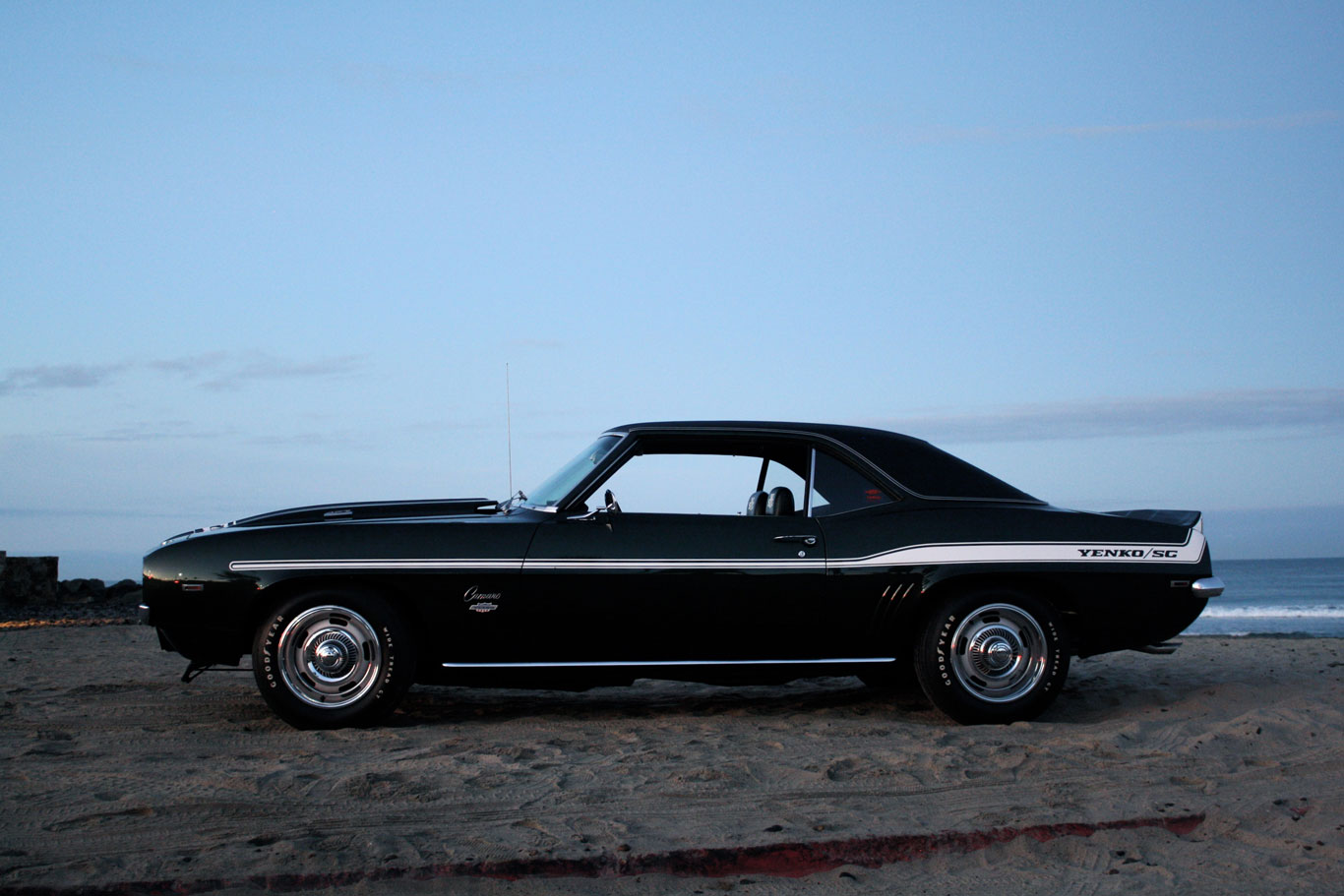Just a basic Yenko Camaro… that actually gets driven
After circling the old Chevy, I held my breath, hoping. Could it be a Norwood, Ohio metal myth in the flesh? I’d never seen a real Yenko but I’d seen plenty of wannabes faking the funk. The owner approached and opened the door. “Excuse me, sir,” I hesitated, “is this a real Yenko?” His face expressed what every genuine Shelby Cobra owner regularly endures.
Thankfully, Jeff Phillips is a nice guy – one of the nicest enthusiasts I’ve ever met, in fact. So when I asked him, at a local San Diego cars and coffee, if he’d be interested in sharing his Yenko with Hagerty, he ecstatically said he’d love to.
After weeks of trying to align schedules, Phillips was kind enough to rise before the sun for some optimal morning light. He insisted on using a location that I was unfamiliar with as a backdrop, though. Apprehensively, I agreed to meet him. Upon arrival, however, I realized this setting was perfect for the Camaro’s Fathom Green metallic.
“Do you want me to pull it up on the sand?” Phillips asked.
I was surprised by his question. Most folks with such a rare car, Yenko built 201 Camaros in 1969, would cringe at the hint of sand. “Are you sure?”
Responding nonchalantly, he drove the Camaro towards the beachfront, asking as he cranked the steering wheel, “How do you want it set up?”
If you’re not getting the idea, let me be more blunt: Jeff isn’t afraid to drive his Yenko. Despite their scarcity and value, Phillips proudly states, “It’s nice when you buy something and it goes up in value, but that’s not why I buy cars. I buy them to drive. I enjoy getting it out, driving it and showing it so other people can enjoy it. That’s what it’s all about, they’re meant to be driven and shared.”
His Yenko Camaro, is essentially what the Shelby GT500 is to Ford – an outsourced production car that’s been hot-rodded. At the time, due to General Motors’s ban on official motorsport participation, no GM production vehicle was permitted to have an engine larger than 400 cubic inches (6.5-liters). This production hurdle gave Don Yenko, a privateer builder, an idea. Yenko believed that there was room in the market for a higher-performance Camaro.
And by 1969, enough dealerships had convinced Chevrolet to offer factory installed L-72 engines through the Central Office Production Order (COPO) system – meaning the 1969 model year Yenko Camaros came with a warranty. The rest of the Yenko package included a Z-28 front sway bar, power disc brakes, 4.10 Positraction rear differential, heavy-duty radiator and the option of a Turbo Hydramatic 400 automatic or four-speed manual M21 gearbox. The bodies were treated to a unique cowl hood, front chin spoiler, Yenko badging, rear deck spoiler and white or black vinyl, depending on the paint.
Phillips has always been a Camaro guy and with a stunning blue 1969 Z28 already in the garage, he never intentionally set out to buy a Yenko. Although he’d always been a fan, it wasn’t until a friend picked this particular car up to flip at an auction when Jeff considered buying it. His friend was waiting to auction the car at an upcoming Barrett-Jackson show, but Jeff intercepted it.
Before making the deal, Jeff wanted to verify the car’s authenticity – there are a lot of imposters out there. Although Yenko specialist Ed Cunneen of COPO Connection had previously certified the car in 2005, it’d been years since an expert had assessed the car. To ensure everything still checked out, Phillips had Brian Henderson of Supercar Workshop give the car a onceover.
The Camaro was deemed a legitimate Yenko and Brian was even able to reveal some interesting bits about the car. Although t a proper 512-numbered block powers the car, the 7.0-liter 427-cid V-8 is actually four months older than the chassis. Brian believes this car probably had a new engine installed under warranty as 1969 was the only year Yenkos were certified GM products – perhaps someone had a little too much fun at the drag strip in 1969, something Jeff would certainly approve of.
As all of us tend to do with our cars, Phillips pointed out that the car isn’t without flaws.
The numbers-matching body panels wear a 30-year-old respray, some of the vinyl is etching away and miscellaneous hardware under the hood isn’t original. Inside, the cabin vinyl and carpeting are believed to be factory original with only minor wear. A Yenko-spec Stewart Warner steering column-mounted tach and center console gauge pod are equipped. Despite its near 50-year-old interior and older respray the car is remarkably clean.
This Yenko may not be a concours queen, but that’s what makes it all the more special. It’s mechanically sound – and what a noise it makes. It sounds faster at idle than most cars do at speed. It is driven regularly, maintained religiously and still carries all of its appropriate Yenko equipment.
Phillips might refer to these minor flaws as imperfections, but they all add up to patina-d and driven perfection.


